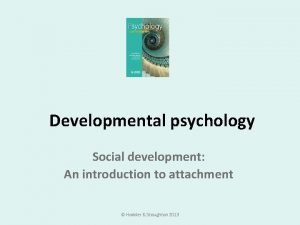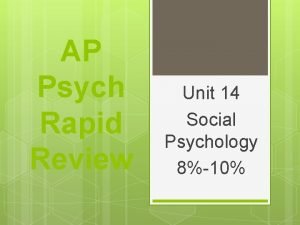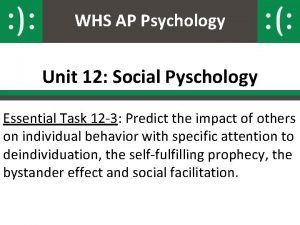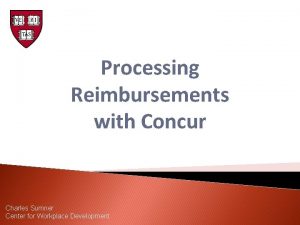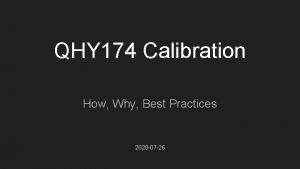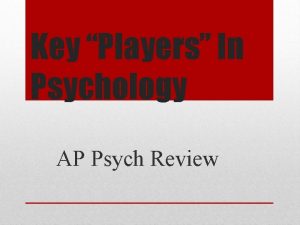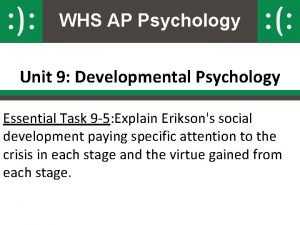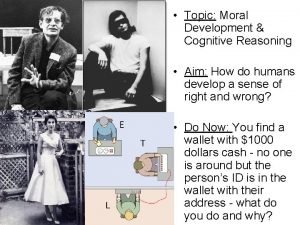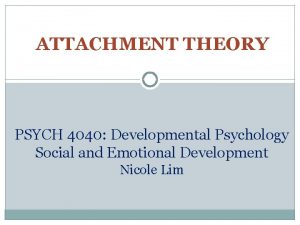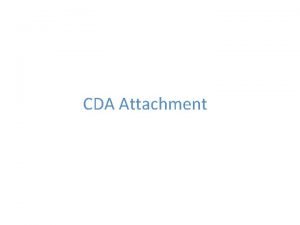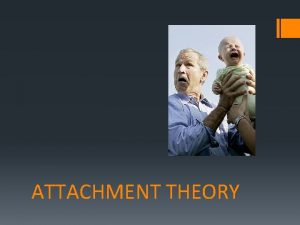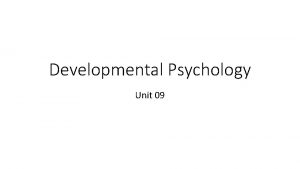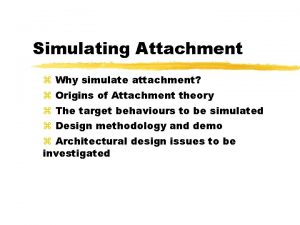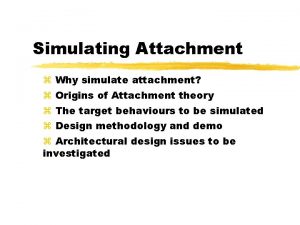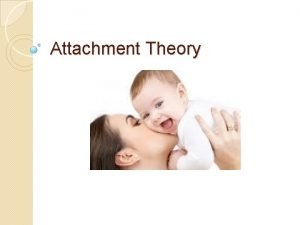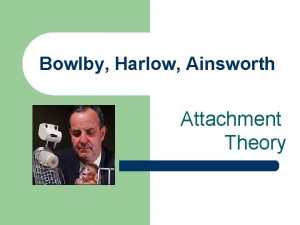ATTACHMENT THEORY PSYCH 4040 Developmental Psychology Social and













- Slides: 13

ATTACHMENT THEORY PSYCH 4040: Developmental Psychology Social and Emotional Development Nicole Lim

Your thoughts? �What are some needs that are important to a baby? �In a group, discuss & rank

Our Goals for Today �Identify key stages and components of Bowlby’s Attachment Theory �Distinguish between the categories in Ainsworth’s Attachment theory Characteristics Measurements Implications �Ability to apply what we learn

Defining Attachment �Enduring emotional bond that exists between a child and significant people in the child’s life �“Lasting psychological connectedness between human beings” - Bowlby �“Affectional tie that one person or animal forms between himself and another specific one – a tie that binds them together in space and endures over time” - Ainsworth

Bowlby’s Four Phases of Attachment 1. 2. Preattachment phase (birth - 6 weeks) • Do not discriminate amongst people around them Attachment-in-the-making (6 weeks - 6 -8 months) • Infants prefer familiar people

Bowlby’s Four Phases of Attachment 3. Clear-cut attachment (6 -8 months - 1½-2 years) • Infants actively seek contact with familiar individuals • Separation Anxiety 4. Reciprocal relationships (1½-2 years +) • Working partnerships with caregivers

Bowlby’s Four Key Components of Attachment �Proximity Maintenance �Safe Haven �Secure Base �Separation Distress

Video: Identify the Components! �baby scared of vacuum �https: //www. youtube. com/watch? v=MWJz. Wl 3 k 45 E �Proximity Maintenance �Safe Haven �Secure Base �Separation Distress

Evaluating Attachment Ainsworth’s “Strange Situation” Procedure • Mom & child play • Stranger enters • 1 st Separation – Mom leaves • 1 st Reunion – Mom returns • 2 nd Separation – Mom leaves • 2 nd Reunion – Mom returns

Attachment Categories Secure (65%) Caregiver = secure base Seeks contact Comforted by mother Greets mother happily after separation Ambivalent/Resistant (15%) Extreme distress during separation Won’t be comforted upon caregiver’s return Expresses anger at caregiver

Attachment Categories Insecure/avoidant (20%) Little distress during separations Avoids contact with mother upon return Disorganized Attachment (<5%) Inconsistent behaviors Often appear dazed or disoriented

Video: Attachment Categories Secure, Insecure, Avoidant & Ambivalent Attachment in Mothers & Babies https: //www. youtube. com/watch? v=DH 1 m_ZMO 7 GU

Let’s discuss �In what ways can Attachment theory be applied to your interest/field? �Review the list you created for “what’s important to babies”, are there any changes to your rankings? ? ? ?
 What was john bowlby attachment theory
What was john bowlby attachment theory Ap psychology unit 14 review
Ap psychology unit 14 review Superordinate goals
Superordinate goals 866-793-4040
866-793-4040 Qhy2020
Qhy2020 Swch45
Swch45 Qhy 4040
Qhy 4040 Qhy 4040
Qhy 4040 Classical conditioning
Classical conditioning Psychology chapter 13 social psychology
Psychology chapter 13 social psychology Unit 9 developmental psychology
Unit 9 developmental psychology Lawrence kohlberg developmental psychology
Lawrence kohlberg developmental psychology Research methods in developmental psychology
Research methods in developmental psychology Gestalt
Gestalt
